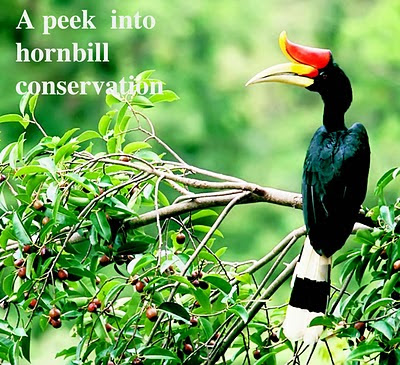MAJESTIC: A rhinoceros hornbill is seen perched on a fruit tree
ByCheong Ah Kwan
HER reputation preceded her. When news broke that Dr Pilai Poonswad would be giving a talk to the Malaysian Nature Society Kuching Branch, offers poured in to sponsor her airfare and host her stay. Even MNS Headquarters in Selangor enquired how we had the good fortune to land such a distinguished speaker.
Affectionately dubbed the Grandmother of Hornbills, Poonswad has devoted 30 years of her life to hornbill research and conservation. She leads the 20-year Thailand Hornbill Project (THP) based at the Faculty of Science, Mahidol University, which is supported by the Hornbill Research Foundation (HRF).
Hornbills are no doubt one of the most magnificent bird groups in Asian tropical forests. They originated 50 million years ago during the Eocene period. As a flagship species, their presence and status reflect the health of the forest ecosystem. Unfortunately, their population has been declining in many parts of the world, including Sarawak.
An understanding of the hornbill’s breeding habits is essential for any successful conservation effort. The display of courtship rituals signals the start of the breeding season. The adult male hornbill offers a variety of food to a prospective mate, at the same time, flying back and forth inviting her to check on a nearby tree cavity that he has picked for their future nest.
Undaunted by her lukewarm response, he continues to bring his offerings and is insistent that she takes a look at his choice of a home. His persistence finally pays off when she accepts food from him.
Occasionally, he has to entice her into his tree cavity by dropping food inside it. Upon satisfactory inspection of the tree cavity, she seals herself in using faecal material mixed with bits of mud and wood as well as regurgitated food; becoming a prisoner of her own device.
There she will be imprisoned with her egg until it hatches and the chick has fledged. Now, who can blame her for taking time to choose a comfortable nest where she will spend months holed up in!
Over the next few months, the male hornbill continues to feed his mate and their chick through a small hole that is left unsealed. The female hornbill can be rather picky in her taste and will sometimes throw out the food brought to her without much ceremony. The poor male hornbill has to watch his hunting efforts fall to the ground. Unruffled by her ingratitude, he will fly off to hunt for something that will be better received.
Hornbills are monogamous creatures and are extremely faithful to their mates. In the instance where the female hornbill dies, the male will often return alone to the nest they have shared for several years before abandoning it.
Since hornbills are large birds, they require very big trees to nest. Hornbills do not dig out a cavity in their chosen tree by themselves to build their nests. They make use of existing cavities left by woodpeckers or natural cavities that are formed through a long process of succession.
Typically, a cavity begins with fungal infestation. Over time, bees make their hives in the small cavity created. The honey produced attracts bears that further extend the cavity. The dimensions of the cavity have to be just right, as hornbills will not use a big hole since sealing it will be too laborious. A deep cavity is also unsuitable as the male bird will not be able to reach the female to feed it.
EXPERT: Poonswad presents her talk on hornbills. — Photo by Renmin
The lack of suitable trees and nest shortages are the two major threats to hornbill survival. Little can be done with regards to the lack of suitable trees as many have already succumbed to illegal logging and encroaching plantations.
In her hornbill conservation work, Poonswad inspects nest cavities and modifies them so that they become fit for habitation by the birds. Soil is dumped into sunken cavities to raise the floor to increase habitability. She observed that some entrances to the nest cavities do not have an adequate perch for the male hornbill to grasp onto, making feeding his family difficult. For such ‘slippery’ entrances, she attaches a bar to provide better foothold. Narrow entrances are carved open. She has also designed artificial nests that have to be installed 30 metres high. A hornbill nest lasts about 10 years. Repairs carried out to the nest will give it a new lease of life of at least another five years.
Ultimately, the long-termapproach to sustainable hornbill population needs a change in people’s attitudes and the transfer of knowledge to the younger generation.
In southern Thailand, Poonswad has successfully converted poachers in her work area to be her research assistants! Instead of taking away the young chick for immediate quick gains, they now help to record the chick’s development because someone took pains to explain to them the importance of having these amazing birds in their midst.
Measures such as the ‘Adopt A Hornbill Nest’ programme are set up to help stop the loss of forest areas, poaching and illegal logging. In Thailand, even school children can recognise and proudly name the hornbills found in their country.
In the Land of the Hornbills, pictures of hornbills are widely exploited commercially. Tragically, only a few people know that many of the exotic birds featured are not found in Sarawak.



No comments:
Post a Comment